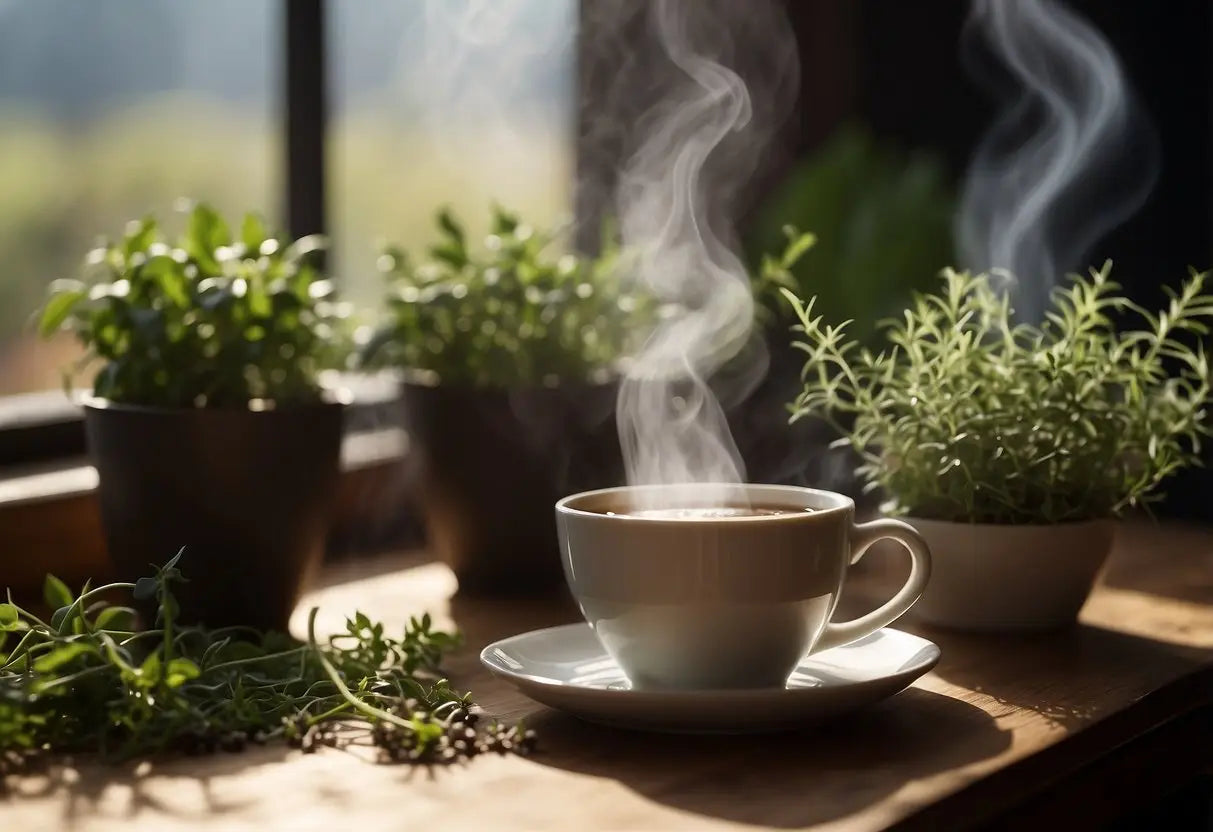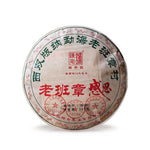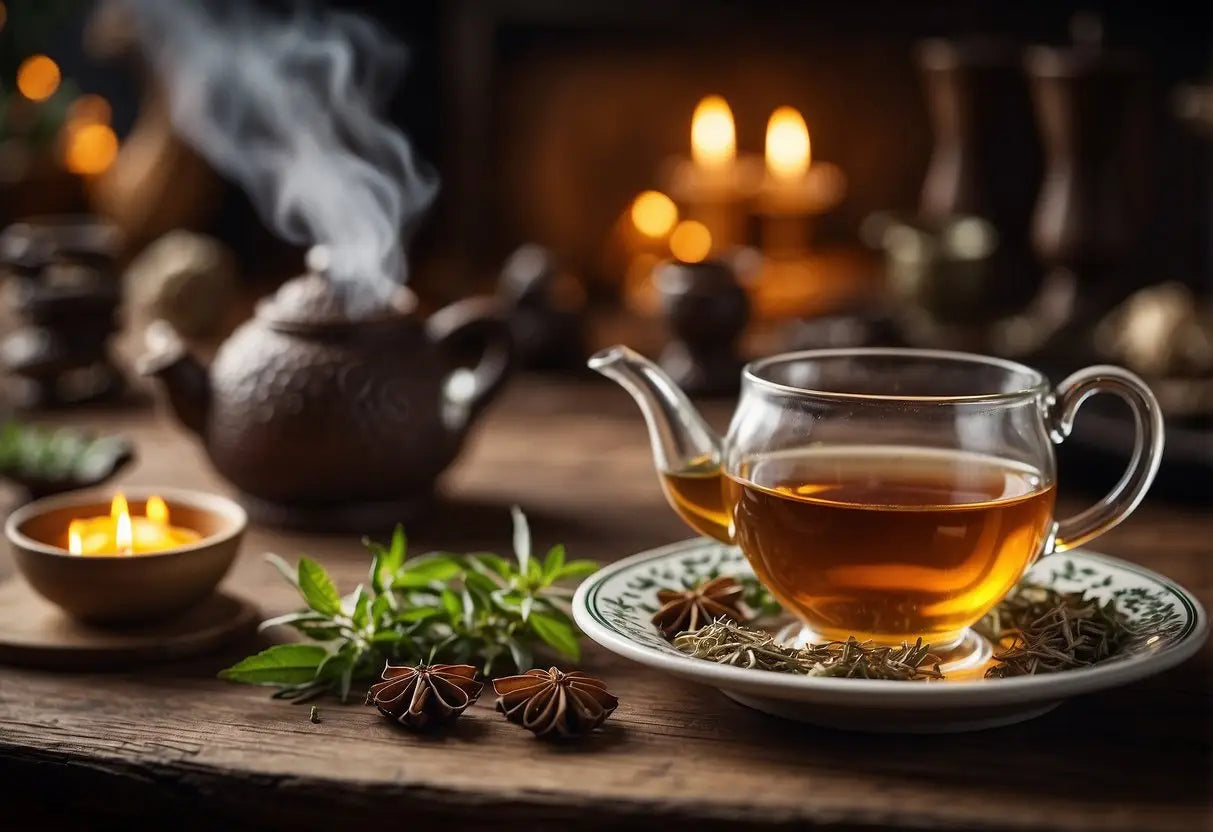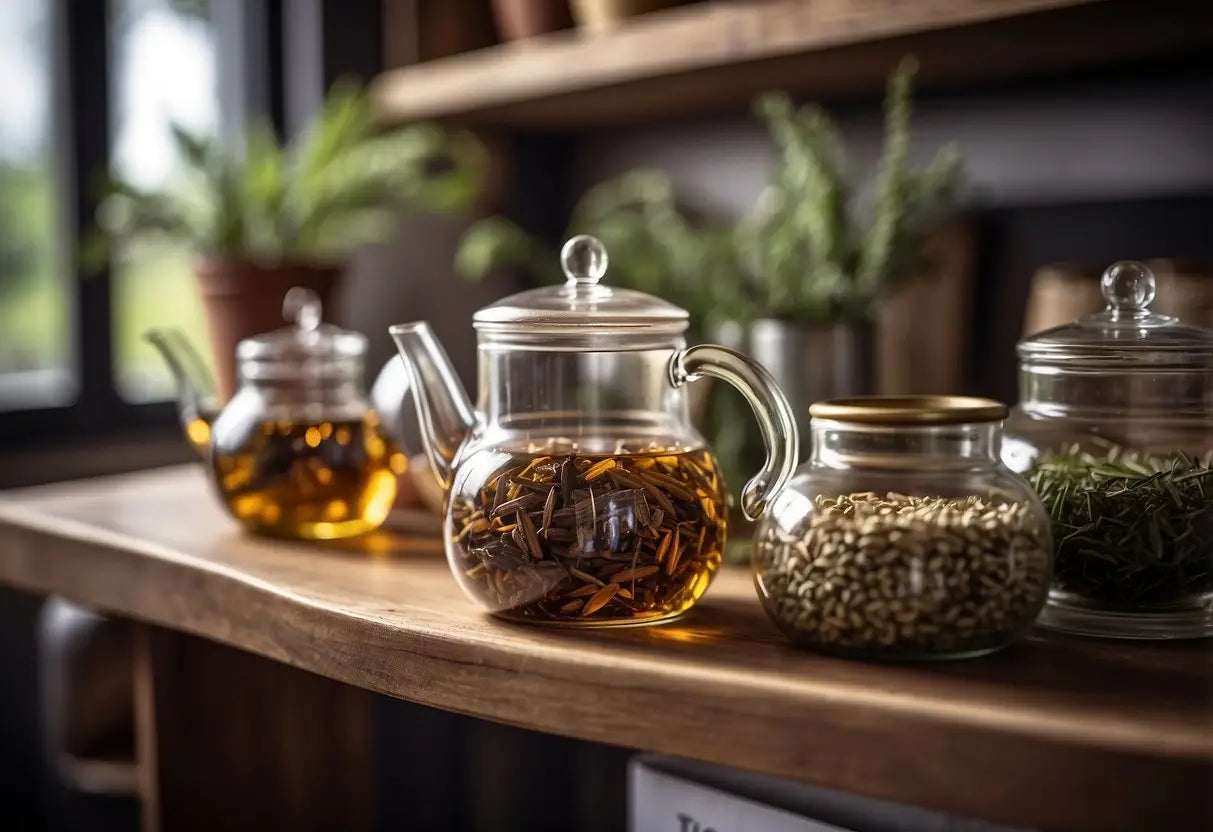Calming Tea
Calming tea has roots in ancient traditions and often includes a variety of herbs known for their soothing effects. These beverages are not only enjoyed for their taste but also for their potential health benefits.
Historical Significance
Calming tea has been used for centuries across different cultures. In ancient China, herbal teas were not only beverages but also integral to health practices. Similarly, Egyptian and Greek societies used herbal infusions for medicinal purposes.
Traditional uses often intertwined with spirituality. In Japan, tea ceremonies emphasized mindfulness and tranquility. Ancient herbals from Europe documented recipes believed to aid in relaxation and stress relief.
Bestsellers

2022 Pu-Erh Tea Sample Box (Free Shipping)

2022 Yi Pin Chen Sheng Raw Pu-erh Tea Sample Box

2022 Lao Ban Zhang Raw Pu-erh Tea

2022 Na Ka Raw Pu-erh Tea

2023 Ban Zhang Yin Xiang Raw Pu-erh Tea

2017 Rong Pu Ripe Pu-erh Tea
The historical significance lies in the consistent use of herbal blends aimed at holistic well-being.
Common Ingredients
Calming teas typically include herbs like chamomile, which is known for its mild sedative effects.
Another common ingredient is lavender, prized for its fragrance and soothing properties. Lemon balm and peppermint are frequently used. They bring a pleasant flavor and aid in reducing anxiety.
Less common but effective ingredients include valerian root and passionflower. These are noted for their stronger calming effects and are often found in teas marketed for sleep support.
These herbs are often chosen for their complementary properties. They create a balanced blend that promotes relaxation.
Types of Calming Tea

There are various types of calming tea, known for their soothing properties. Each type has unique characteristics and benefits that cater to different preferences and needs.
Herbal Teas
Herbal teas are known for their natural ingredients and therapeutic benefits. Chamomile tea is one of the most popular options. It boasts a mild, pleasant taste and has been used for centuries to reduce stress and induce sleep. Peppermint tea, another favorite, provides a refreshing minty flavor and helps alleviate digestive issues.
Lemon balm tea, with its subtle lemon flavor, is renowned for its calming effects on the nervous system. It may help in reducing anxiety and promoting restful sleep. Additionally, passionflower tea is recognized for its potential to improve mood and relieve insomnia.
Herbal teas are caffeine-free, making them a suitable option for any time of day. Their natural ingredients also make them a safe choice for most individuals.
Green Teas
Green teas offer a unique blend of calming effects and health benefits. Matcha tea, made from finely ground green tea leaves, is extremely rich in antioxidants and has a distinct, vibrant flavor. It contains L-theanine, an amino acid known to promote relaxation without causing drowsiness.
Sencha tea is another excellent option. It has a subtle, grassy flavor and moderate caffeine content, providing a gentle energy boost while maintaining its calming properties.
Lao Ban Zhang

2024 Lao Ban Zhang Ripe Pu-erh Tea

2022 Lao Ban Zhang Raw Pu-erh Tea

2023 Ding Feng- Lao Ban Zhang Raw Pu-erh Tea (42g)

2024 Xiao Ban Zhang Raw Pu-erh Tea

2020 Lao Ban Zhang Raw Pu-erh Tea 125g

2025 Lao Ban Zhang -Gan En Raw Pu-erh Tea 357g
Genmaicha tea, a blend of green tea and roasted brown rice, offers a nutty, toasty flavor and is known for its stress-relieving qualities. Its low caffeine content makes it suitable for evening consumption.
Flower Infusions
Flower infusions are made from the blossoms of various plants and are known for their aromatic qualities. Lavender tea stands out with its fragrant scent and ability to calm the mind, making it perfect for evening relaxation.
Hibiscus tea, with its tart and tangy flavor, is rich in antioxidants and can help lower blood pressure, contributing to a calming effect.
Jasmine tea combines the delicate aroma of jasmine flowers with green or white tea, providing both relaxing and revitalizing properties. Its soothing scent and mild flavor make it a popular choice for unwinding after a long day.
Flower infusions are often caffeine-free, making them a great option for a calming experience at any time.
Health Benefits

Calming tea offers a range of health benefits, including reducing stress, improving sleep, and aiding digestion.
Stress Reduction
Calming tea often contains herbs like chamomile, lavender, and lemon balm, which are known for their anxiety-reducing properties. These herbs can help lower cortisol levels, the hormone associated with stress.
Sipping a warm cup can create a moment of calm in your day and may help you manage daily stressors more effectively. Scientific studies have shown that these herbs can induce a state of relaxation without the side effects of conventional medications.
Sleep Improvement
Ingredients in calming tea, such as valerian root and passionflower, are natural sleep aids. Drinking a cup before bedtime can help you fall asleep faster and improve sleep quality.
The herbal compounds interact with neurotransmitters in the brain to promote relaxation and drowsiness. For individuals struggling with insomnia or poor sleep, incorporating calming tea into your nightly routine can be beneficial.
Digestive Aid
Calming tea can also support digestion, thanks to ingredients like peppermint, ginger, and fennel. These herbs can help relieve symptoms of bloating, gas, and indigestion.
Peppermint tea, for instance, can relax the muscles of the gastrointestinal tract, making it easier to pass gas and reduce discomfort. Ginger is known to soothe the stomach and alleviate nausea, while fennel helps with overall digestive health by reducing spasms and improving gut function.
Brewing Techniques
The art of brewing calming tea focuses on the precise balance of steeping times, water temperature, and the choice between loose leaf and bagged tea.
Steeping Times
Proper steeping times vary depending on the type of tea. For green tea, a steeping time of 2-3 minutes is ideal to avoid bitterness. Black tea requires 3-5 minutes to release its rich flavors, while herbal teas may need 5-7 minutes to fully infuse their calming properties.
It's important not to over-steep, as this can result in a bitter taste. Use a timer to ensure accurate steeping times. Different blends may have unique requirements, so always refer to any specific guidelines provided by the tea manufacturer.
Water Temperature
Water temperature is crucial for extracting the best flavors. Green teas should be steeped with water between 160-180°F (70-80°C). Black teas benefit from hotter water, around 200-212°F (93-100°C). Herbal teas generally require boiling water at 212°F (100°C).
Using a thermometer or a kettle with temperature settings can help maintain precision. Avoid using water that is too hot, especially for delicate teas like green tea, to prevent burning the leaves and causing a bitter taste.
Loose Leaf vs Bagged Tea
Loose leaf tea and bagged tea offer different experiences. Loose leaf tea typically provides a fresher, more potent flavor as the leaves have more room to expand and infuse properly. You may need a tea infuser or a teapot with a built-in filter for brewing.
Bagged tea is convenient and faster to prepare. It is ideal for those on the go. However, it may contain smaller, broken leaves, which can affect the flavor profile. Both options can provide a calming experience, but loose leaf tea often results in a richer and more nuanced taste.
Cultural Practices

Calming teas play an essential role in various cultural rituals and daily habits. These practices highlight the significance of tea in promoting relaxation and well-being.
Tea Ceremonies
Tea ceremonies are significant social and spiritual rituals. In Japan, the chanoyu or sado involves the meticulous preparation and presentation of matcha. The ceremony emphasizes harmony, respect, purity, and tranquility. Each movement is deliberate, creating a meditative atmosphere.
China's gongfu cha is another elaborate ceremony. It involves brewing tea leaves multiple times to extract their full flavor. The process captures the essence of patience and mindfulness. Each step, from heating the water to pouring, is performed with precision.
Daily Routines
In many cultures, calming tea is an integral part of daily life. In England, afternoon tea is a cherished tradition. A cup of chamomile or lavender tea can provide a moment of relaxation during a busy day.
In India, herbal teas like tulsi are common in morning routines. These teas are believed to offer various health benefits, including stress reduction. Turkish households often serve apple tea, known for its soothing properties, to guests, creating a culture of hospitality and relaxation.
Selection and Storage

Choosing the right tea and storing it properly are crucial for preserving its calming effects and flavors. The following guidelines will help you make informed choices and ensure your tea remains fresh.
Choosing Quality Tea
Look for whole leaves over broken leaves or tea dust, as whole leaves retain more flavor and beneficial compounds. Organic teas are often preferred since they‘re grown without synthetic pesticides or fertilizers.
When buying pre-packaged tea, check the expiration date and packaging. Sealed, opaque containers help maintain freshness. If you're buying loose leaf tea, buy from a reputable source that properly stores and handles its products.
Proper Storage Methods
Store your tea in a cool, dark place away from light, heat, and moisture. Use airtight containers made of non-reactive materials like tin, ceramic, or glass to prevent exposure to air and odors.
Keep different types of tea separate to avoid cross-contamination of flavors and aromas.
Always reseal your containers immediately after use to minimize exposure to air.
← Older post Newer post →
